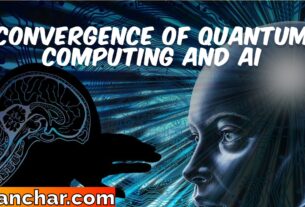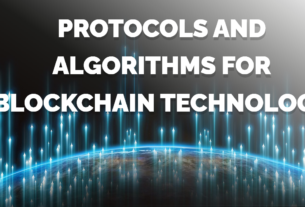The trajectory of Artificial Intelligence is no longer a slow climb—it’s a vertical ascent. In just the last few years, we’ve witnessed monumental leaps, from generative models that create stunning art and coherent text to sophisticated AI systems embedded in our daily workflows. The next decade promises an even more profound transformation, moving AI from an impressive tool to an indispensable partner in nearly every facet of human endeavor.
Here are five key developments that will fundamentally reshape technology, industry, and society over the next ten years.
1. The Rise of Agentic AI and Autonomous Systems
One of the most significant shifts will be the move from passive AI to agentic AI. Current AI, like a large language model, typically waits for a prompt, executes a single task, and stops. Agentic AI, however, is designed for autonomy. These systems are equipped to:
-
Plan: Break down a complex, multi-step goal into a series of smaller, manageable tasks.
- Act: Interact with software, digital tools, and the real world to execute the plan.
-
Self-Correct: Monitor their progress, identify failures or dead ends, and adapt their strategy to achieve the final objective.
Automation to Autonomy
In the next ten years, agentic AI will transform various industries. Instead of just writing a first draft of an email, an AI agent will be capable of:
-
Business Operations: Automating entire workflows, such as managing a complete lead-to-cash cycle, from initial marketing outreach to invoicing and payment reconciliation.
-
Software Development: Acting as a “virtual co-worker” that can receive a high-level goal, write the necessary code, debug it, deploy it to a test environment, and report back on completion.
-
Physical World Robotics: Driving the next generation of truly autonomous systems, including advanced self-driving vehicles, smart logistics robots that navigate unpredictable warehouse environments, and highly flexible manufacturing robots that can adapt their tasks in real-time.
This shift will eliminate entire manual workflows, making human oversight focus on setting high-level strategy and managing the ethical and safety guardrails, rather than micro-managing tasks.
2. Hyper-Personalized and Predictive Healthcare
The convergence of massive biomedical datasets, wearable technology, and advanced AI models is set to revolutionize medicine, moving it from a reactive “treat the sick” model to a proactive “prevent the illness” model.
Personalized Medicine at Scale
AI will move beyond general diagnostic assistance to creating hyper-personalized treatment protocols. We can expect:
-
Predictive Diagnostics: AI-driven analytics will continuously monitor an individual’s genetic data, lifestyle factors, electronic health records, and real-time biometric data from wearables. By analyzing these huge, diverse datasets, AI will predict an individual’s risk for specific diseases—from cancer recurrence to heart failure—months or even years before symptoms manifest.
-
Drug Discovery and Development: Machine learning models will drastically accelerate the pharmaceutical pipeline, simulating the effect of millions of molecular combinations to identify novel drug candidates and predict their efficacy and potential side effects in specific patient populations.
-
Digital Twins: The concept of a “digital twin” of an individual patient will become a reality. This AI-powered virtual model of a patient’s physiology, built from their unique data, will allow doctors to safely test various medications, surgery plans, or lifestyle changes virtually before applying them in the real world, leading to dramatically improved treatment outcomes.
The result will be medical care that is not only faster and more accurate but also entirely customized to one’s unique biological makeup.
3. Universal Multimodal AI and Intuitive Interfaces
The current generation of AI models primarily processes one type of data: text, image, or code. The future, however, belongs to multimodal AI, which integrates and understands information across all sensory formats simultaneously, much like a human brain.
Breaking Down Data Silos
In the next decade, AI will achieve a truly unified understanding of the world, leading to more natural and intuitive human-machine interaction:
-
Seamless Interaction: Virtual assistants will evolve far beyond simple voice commands. They will be able to see an object through a phone camera, hear the tone of a person’s voice, read a related email, and understand the context of a physical environment to provide a relevant, complex response. For example, pointing your phone at a broken appliance and asking, “How do I fix this?” will yield a customized video tutorial with tool recommendations, all generated instantly from a single request.
-
Next-Gen Content Creation: Generative AI will fluidly transition between mediums. A single text prompt could generate a 3D model, a realistic voiceover script, and a fully edited video, all perfectly synchronized, making the content creation process instantaneous and accessible to everyone.
-
Unified Cognition: The core cognitive engines will integrate data streams like text, video, audio, haptics, and sensor data into a single, shared “vector space” of understanding. This allows the AI to make far more sophisticated and contextually rich decisions.
This seamless integration will make human-computer interfaces largely invisible, embedding intelligence into every device and environment.
4. The Centrality of Ethical AI and Robust Regulation
As AI becomes more powerful and autonomous, the discussion around its ethical deployment and governance will move from academic theory to urgent global policy. The next ten years will be defined by the establishment of comprehensive, enforceable regulatory frameworks.
Transparency and Trust by Design
The focus will be on making AI trustworthy through legal and technical mechanisms:
-
Explainable AI (XAI) Mandates: In high-stakes fields like finance, law, and medicine, regulatory bodies will mandate that AI decisions are explainable and traceable. This will push developers away from “black box” models, requiring systems to articulate why they reached a conclusion, building accountability and user trust.
-
Bias Mitigation and Fairness Audits: Extensive effort will go into developing sophisticated tools and legal standards to identify and eliminate systemic bias in training data and algorithms. Companies will routinely undergo “fairness audits” to ensure their AI systems are not inadvertently perpetuating social inequalities, particularly in areas like hiring, loan approval, and criminal justice.
-
Global Regulatory Harmonization: We will see a concerted effort by international bodies to harmonize AI governance. While countries will compete technologically, they will increasingly align on safety standards, data privacy (building on precedents like GDPR), and intellectual property rights related to generative content, creating a complex, but necessary, global playing field.
The industry will learn that the true value of AI is unlocked not just by its power, but by the trust it commands.
5. The Workforce Transformation and the Augmentation Mandate
The impact of AI on the workforce will move from speculation to a tangible, disruptive force. While some repetitive and data-heavy roles will face automation, the dominant trend will be human-AI collaboration and a massive demand for new, augmentation-focused skills.
From Replacement to Augmentation
The next decade will cement the era of the augmented worker:
-
Focus on the Uniquely Human: As AI agents handle rote tasks, the value of human employees will skyrocket in areas that demand creativity, critical thinking, emotional intelligence, and complex moral judgment. Jobs that require negotiation, deep empathy, non-standard problem-solving, and cross-cultural communication will become premium skills.
-
Upskilling and Reskilling as a Business Imperative: Education and corporate training will undergo a rapid overhaul. The essential skill of the next decade will be prompt engineering and the ability to effectively manage and partner with AI tools—to know which AI to use and how to ask the right questions. Companies that invest heavily in upskilling their current workforce to become “AI-powered” will achieve significant productivity gains.
-
New AI-Powered Roles: AI will not just replace jobs; it will create entirely new ones. Demand will surge for AI Ethicists, AI-Human Collaboration Managers, Data Detectives (to audit data quality and bias), and Prompt Engineers—roles centered on ensuring AI is effective, safe, and aligned with human values.
The most successful people will not be those who master AI, but those who master working alongside it. The challenge will be managing the social and economic disruption of this transformation to ensure the benefits of increased productivity are broadly shared.
The Exponential Future
The next ten years will not merely see incremental improvements in AI; they will represent a fundamental phase shift. We are moving toward a world where AI is autonomous, deeply personalized, universally collaborative, and, hopefully, carefully governed. This exponential growth will test our institutions, redefine the nature of work, and ultimately unlock human potential on a scale previously unimaginable. The future of AI is not a distant vision—it’s already being built, and its profound effects are just around the corner.



